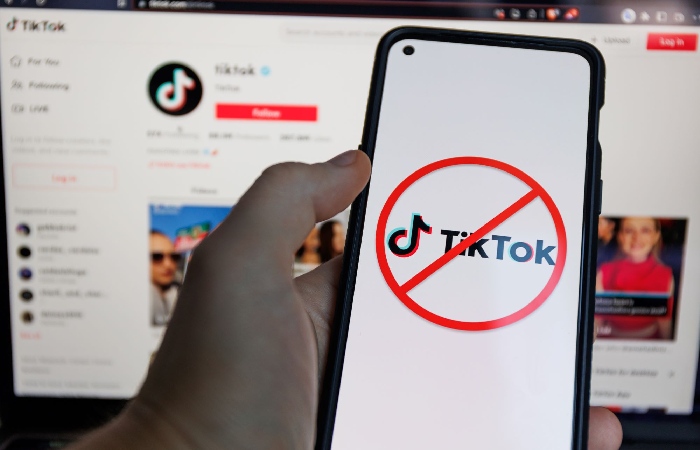The rapidly evolving digital landscape presents new challenges for marketing managers, particularly as the potential banning of TikTok in the United States and Australia looms large. This popular social media platform, owned by Chinese company ByteDance, has become a mainstay of many digital marketing strategies. However, concerns over data privacy, national security, and content moderation have raised questions about TikTok’s future in these countries and the potential implications for businesses.
Darren Urquhart, Director at Rise Local, a leading marketing agency in Australia, emphasizes the importance of marketing managers being proactive in the face of uncertainty: “The sudden loss of TikTok as a marketing channel would undoubtedly impact businesses that have heavily invested in the platform. It’s important for marketing managers to reevaluate their marketing strategies and explore alternative channels to ensure they can adapt quickly to a possible ban.”
In response to these concerns, marketing managers should consider a range of strategies to minimize the impact of a potential TikTok ban. These include diversifying social media presence, creating platform-agnostic content, developing contingency plans, and investing in owned media.
 Urquhart highlights the significance of diversification in uncertain times: “While the potential ban of TikTok is certainly concerning, it’s also a chance for businesses to explore new marketing channels and establish a more robust online presence. Diversifying across multiple platforms can help businesses connect with a wider audience and safeguard against future uncertainties.”
Urquhart highlights the significance of diversification in uncertain times: “While the potential ban of TikTok is certainly concerning, it’s also a chance for businesses to explore new marketing channels and establish a more robust online presence. Diversifying across multiple platforms can help businesses connect with a wider audience and safeguard against future uncertainties.”
To ensure their marketing strategies remain agile and resilient, marketing managers should consider the following recommendations:
- Diversify Social Media Presence: Expanding a brand’s presence across multiple social media platforms, such as Instagram, Facebook, Twitter, LinkedIn, and YouTube, minimizes the impact of losing TikTok as a marketing channel and enables businesses to reach broader audiences while tailoring content to the unique preferences and demographics of each platform.
- Create Platform-Agnostic Content: Focusing on producing high-quality, versatile content that can be adapted to various formats and specifications ensures that content can be easily repurposed across different platforms. This approach maximizes reach and engagement while future-proofing digital marketing efforts.
- Develop Contingency Plans: Marketing managers should prepare alternative marketing and communication strategies that outline how to reallocate resources, reshape content strategies, or invest in other advertising channels in the event of a TikTok ban. Having a contingency plan in place will enable businesses to maintain brand visibility and audience engagement during uncertain times.
- Invest in Owned Media: Building up a brand’s owned media presence, such as websites, blogs, and email newsletters, allows businesses to control their messaging, maintain direct relationships with customers, and reduce dependency on third-party platforms. This investment ensures a more stable foundation for marketing efforts and insulates businesses from the potential fallout of a TikTok ban.
- Collaborate with Influencers and Content Creators: Partnering with influencers and content creators who have a presence across multiple platforms helps businesses ensure their message reaches a broader audience even if TikTok becomes unavailable. By engaging with diverse creators, businesses can maintain audience engagement and brand visibility, regardless of platform availability.
- Stay Informed and Adapt: To successfully navigate the uncertain future of TikTok, marketing managers must stay informed about potential changes in regulations or platform policies that might affect the platform. Keeping up-to-date with the latest news and updates will enable marketing managers to adapt their strategies and make informed decisions in a timely manner, minimizing the impact of a potential ban.
Urquhart also underscores the importance of monitoring performance and adjusting strategies accordingly: “Regularly monitoring and analyzing the performance of marketing campaigns across different platforms is essential for businesses looking to thrive in a rapidly changing digital environment. This will help businesses understand which channels are most effective and adjust their strategies accordingly, minimizing the impact of a potential TikTok ban.”
As the situation unfolds, marketing managers worldwide will be closely watching the decisions made by the US and Australian governments, eager to understand the potential implications for their digital marketing strategies. In the meantime, it’s clear that a flexible and diversified approach to online marketing is more important than ever.
The potential banning of TikTok in the US and Australia serves as a reminder that the digital landscape is constantly evolving, with political, regulatory, and technological factors shaping the way businesses interact with their target audiences. By staying informed, agile, and prepared, marketing managers can continue to thrive in the face of potential challenges and capitalize on new opportunities as they arise.
In conclusion, the potential banning of TikTok in the US and Australia presents both challenges and opportunities for marketing managers. By implementing a diversified, platform-agnostic, and future-proof marketing strategy, marketing managers can not only mitigate the impact of a potential TikTok ban but also harness the power of alternative marketing channels and owned media to drive growth and engagement. With the guidance of experts like Darren Urquhart and the adoption of proactive strategies, marketing managers can navigate the uncertain future of TikTok and maintain a strong, resilient digital presence.
As the digital landscape continues to shift, it’s crucial for marketing managers to stay informed about the latest developments and trends. By staying ahead of the curve and embracing a flexible, forward-thinking approach to marketing, businesses can successfully navigate potential challenges like the TikTok ban and maintain a competitive edge in an ever-changing environment.


